Chieti – Museo Archeologico Nazionale
The Museo Archeologico Nazionale di Abruzzo is housed in the 1830s neoclassical Villa Frigeri in Chieti, atop a small hill.
Were I not so impatient to see a certain exhibit, I would linger in the gardens, cool off by the fountains, sigh over the views. Later, I tell myself.

The museum is a gem
Inside, the spaces are airy and uncluttered, the staff courteous and informed. They hover nearby, ready to answer questions. All the exhibits are meticulously labelled and explained in Italian, with a (mostly) good English translation.
The Guerriero di Capestrano, the main object of our visit, is on the ground floor of the Museum but it is placed near the exit. A wise strategy. Anything afterwards that is not Michelangelo’s David would be an anti-climax.
Dulcis in fundo, as the Romans said (or at least that’s what Italians will tell you when you’re too impatient to get to the pud). Leave the best to last.
I imagined we would make a beeline for the Guerriero and rush through the rest. But I underestimated the rest. This is a truly impressive collection of artefacts, mostly extracted from tombs, illustrating the lives and deaths of the peoples that inhabited Abruzzo in pre-Roman times – the Sabines, Frentani, Aequi and Marsi; the Vestini, Peligni, Piceni, Marrucini and Carricini.
From tiny bronze buckles to carved funeral beds made of bone, embellished with exquisitely wrought figures, from misshapen coins to delicate bracelets that would attract admiring glances even today, this is a truly satisfying banquet.
And we haven’t even got to dessert.
The Lady of Capestrano
Before we get to the Guerriero, we find his twin piece, his lady, the Dama di Capestrano, found at the same time. Only her torso remains. Smaller and less celebrated than her Warrior, she is important in her own way. Being the only female statue from the time, she provides vital information on how women of the period wore their robes, (pinned at the shoulder by two brooches), and their hair, (in braids to one side).

The Warrior
When I finally get there I am grateful to be alone. The family with several lovely (I’m sure), children is absorbed elsewhere, my companions lost in some other room gazing at ancient coins. So it’s just me and the Warrior.
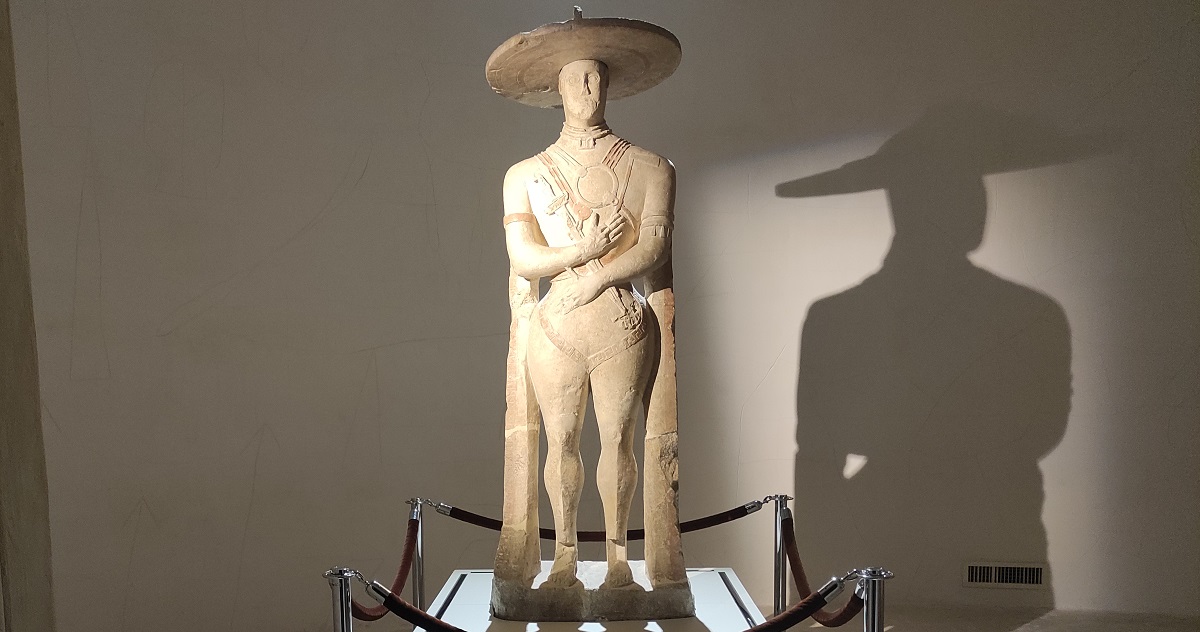
He is awesome, in the true sense of the word. It is one of the most impressive sculptures I have ever seen, and I live in the city of the aforementioned David.
I stare up at him for a long time, identifying the various weapons strung across his chest, marvelling at his small delicate hands. Then I walk in a slow circle around him, admiring his back and broad shoulders, his profile. And back to the front again.

I am beguiled and bewitched. And just a little overwhelmed. He towers over me. But I still feel intimately drawn to him.
It must be the setting. The artful lighting throws his shadow against the back wall so that he is everywhere. The effect is stunning.
We owe the setting to the artist Mimmo Palladino. who wrote ‘I wanted almost to purify the Guerriero of any significance that defines him historically and dates him. Whoever looks at him must draw suggestions that go beyond his chronological collocation.’
And yet, and yet …. how can you NOT place him historically? For this magnificent sculpture, over two metres tall, is around 25 centuries old. How can you gaze at him without thinking of the craftsmanship of the people that roamed Abruzzo in the 5th and 6th centuries BC? A land where, even now, perhaps, there are places where no one has since set foot and where, in fact, the statue lay buried and unseen until less than a century ago.
You can find details of the location and circumstances of his discovery here.
I am reluctant to leave. But out in the garden, we enjoy the views, the fountain and the trees, feeling fully satisfied the way you do after a delicious meal.
Where to find it
In Chieti, head for Porto Andrea
Address: Via Guido Costanzi, 3, 66100 Chieti
Opening hours 9am– 19.30. Closed on Mondays. Ticket office closes 30 minutes earlier. Tickets cost 4 euro, reduced 2 euro.


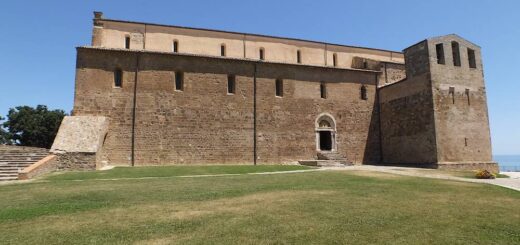

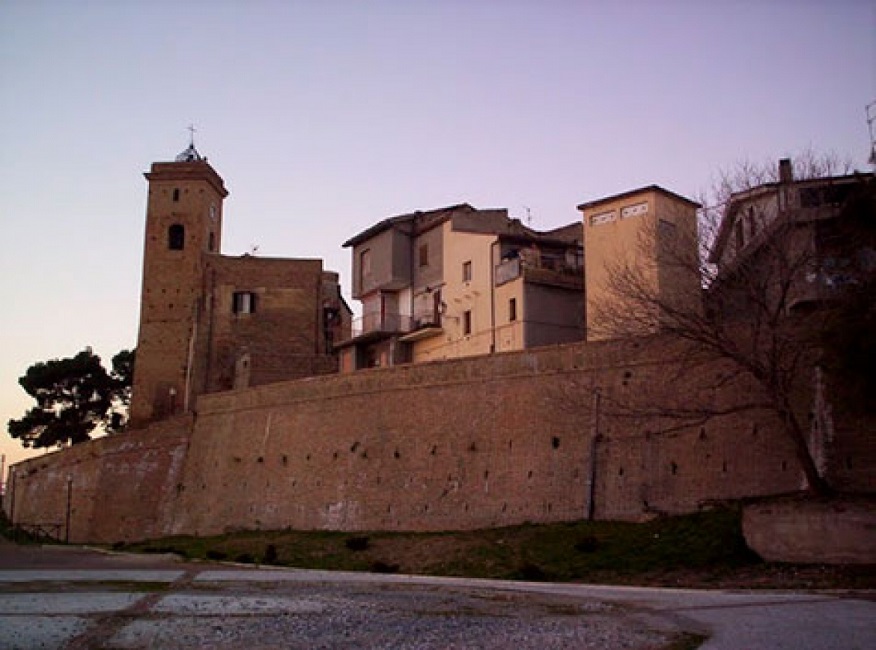
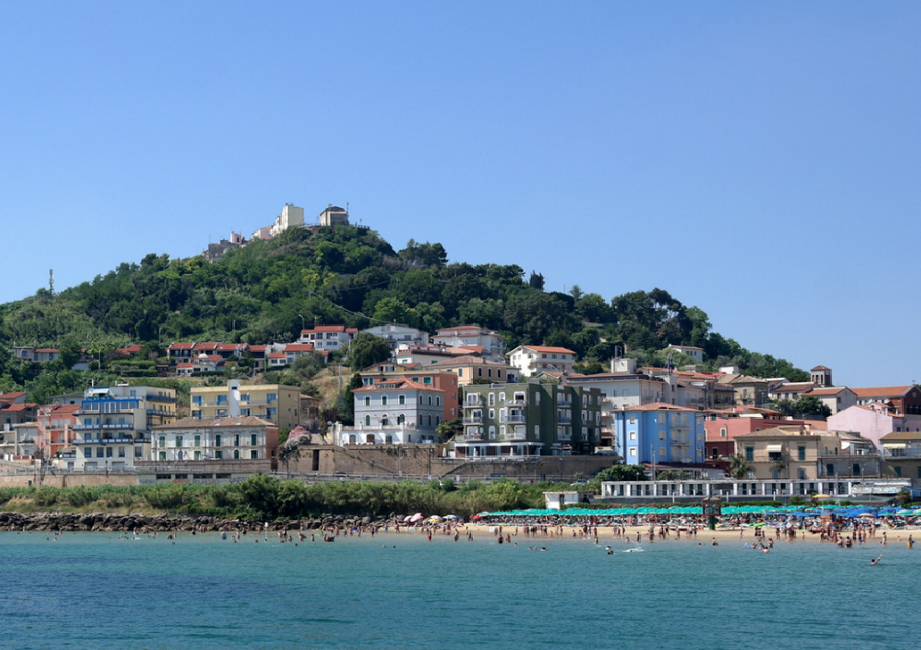
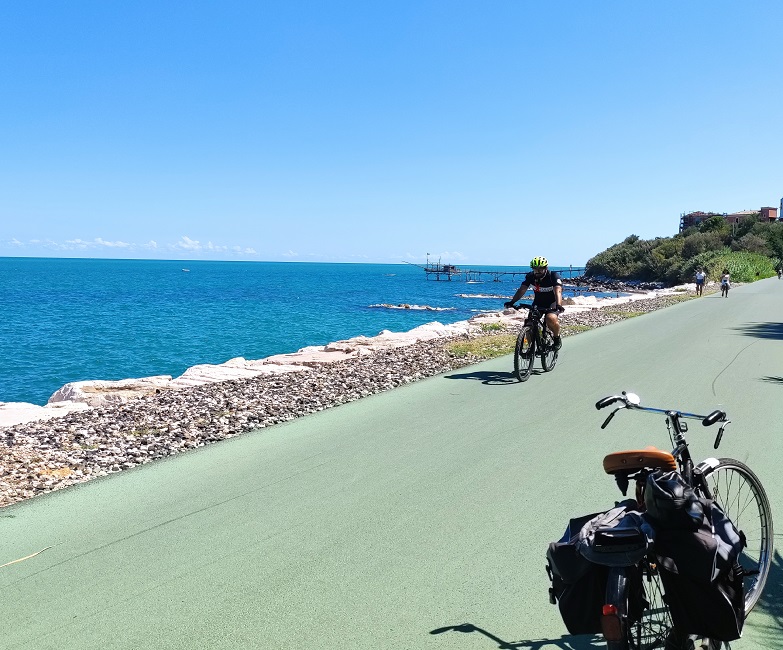
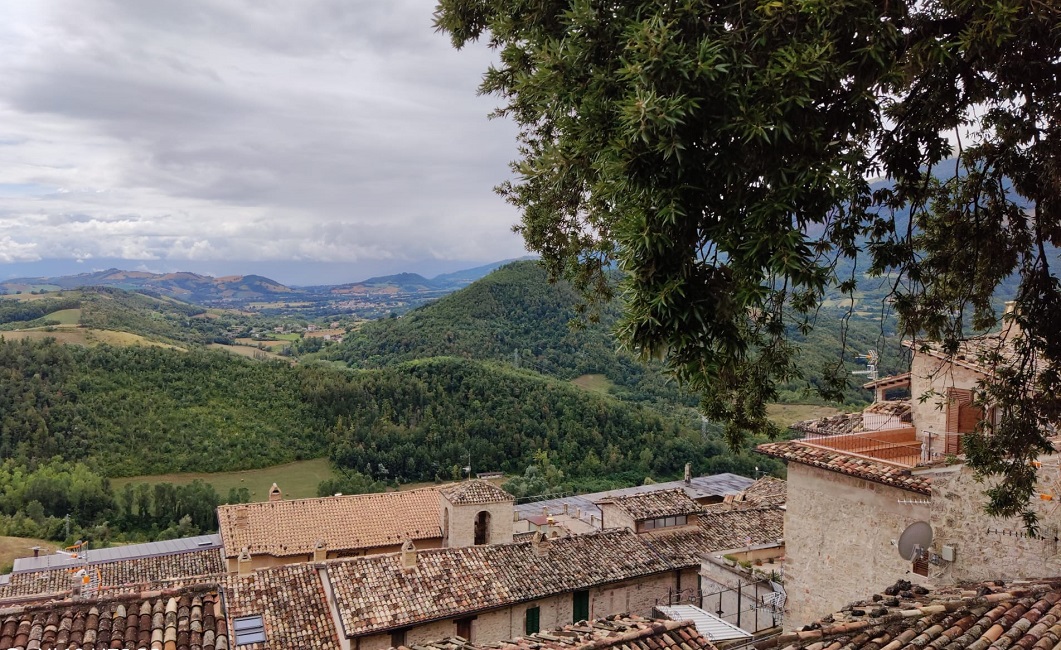
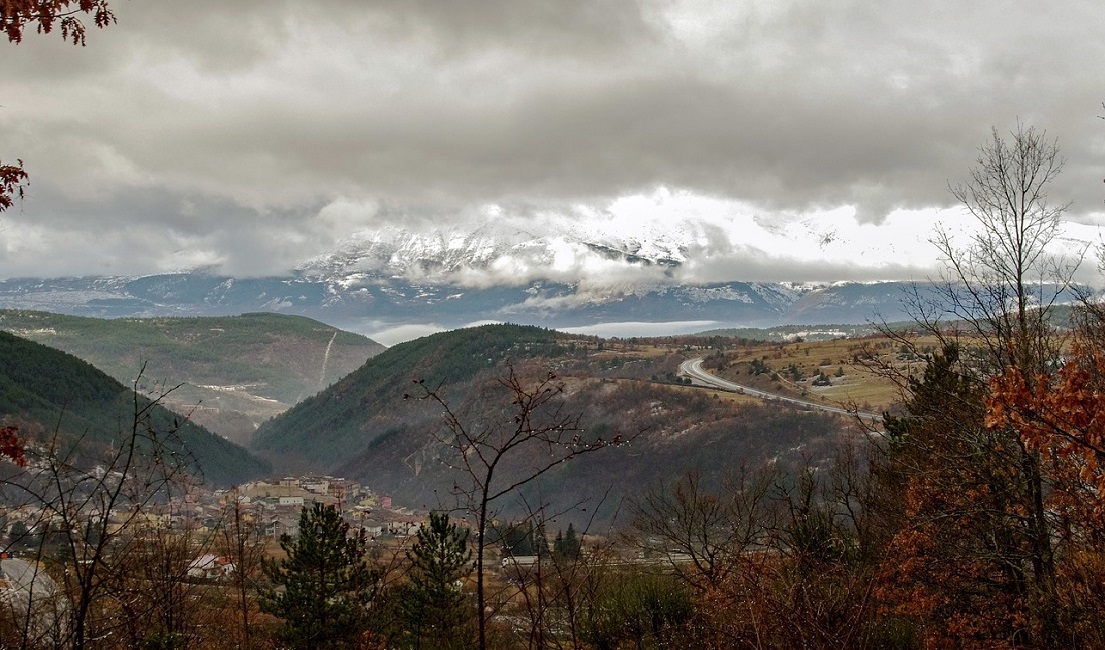

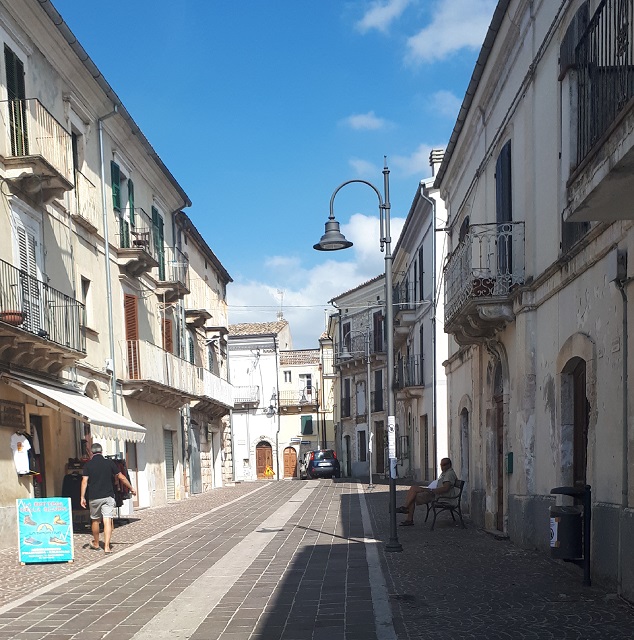
1 Response
[…] I have seen the famous warrior. You can read about the experience here. […]